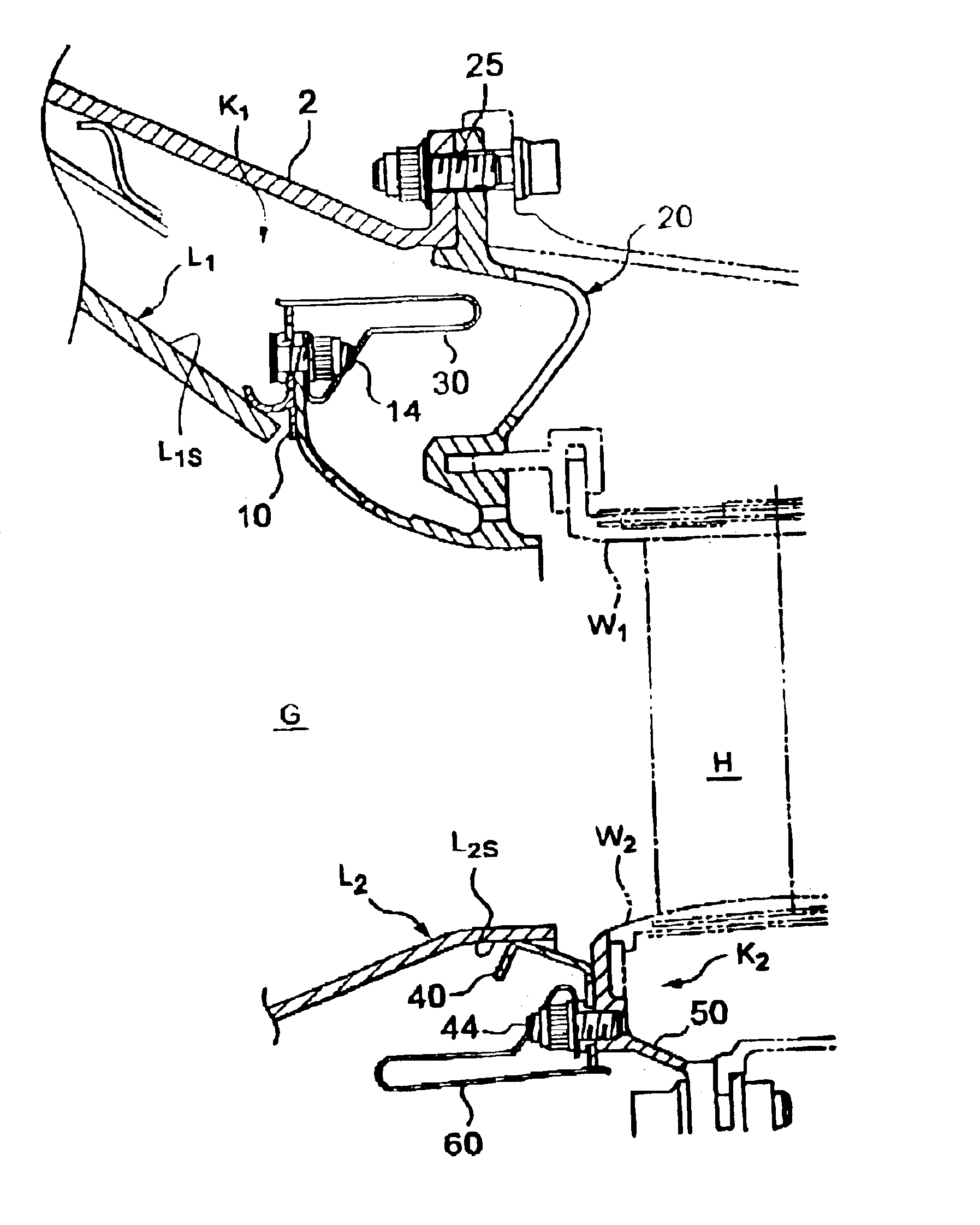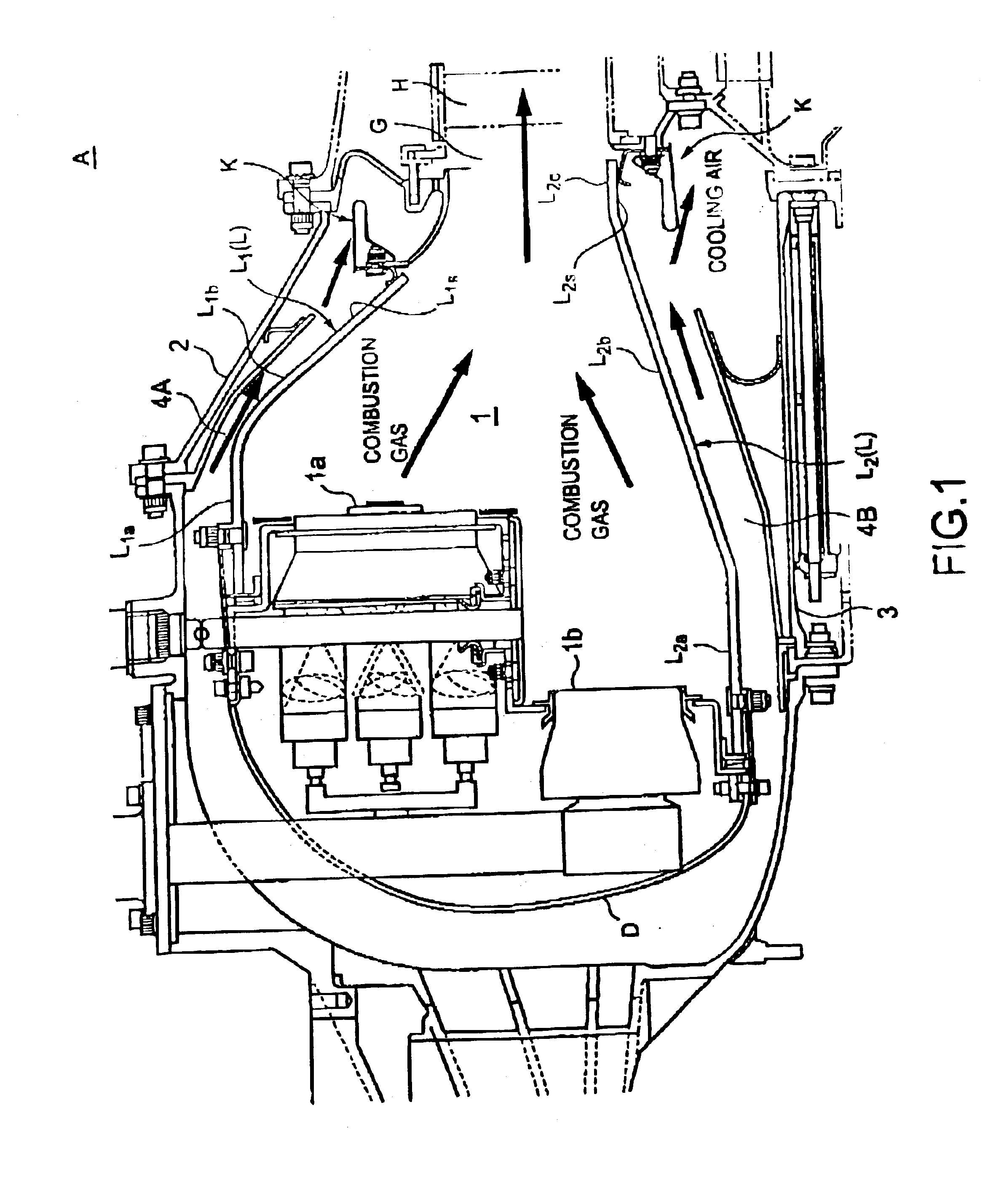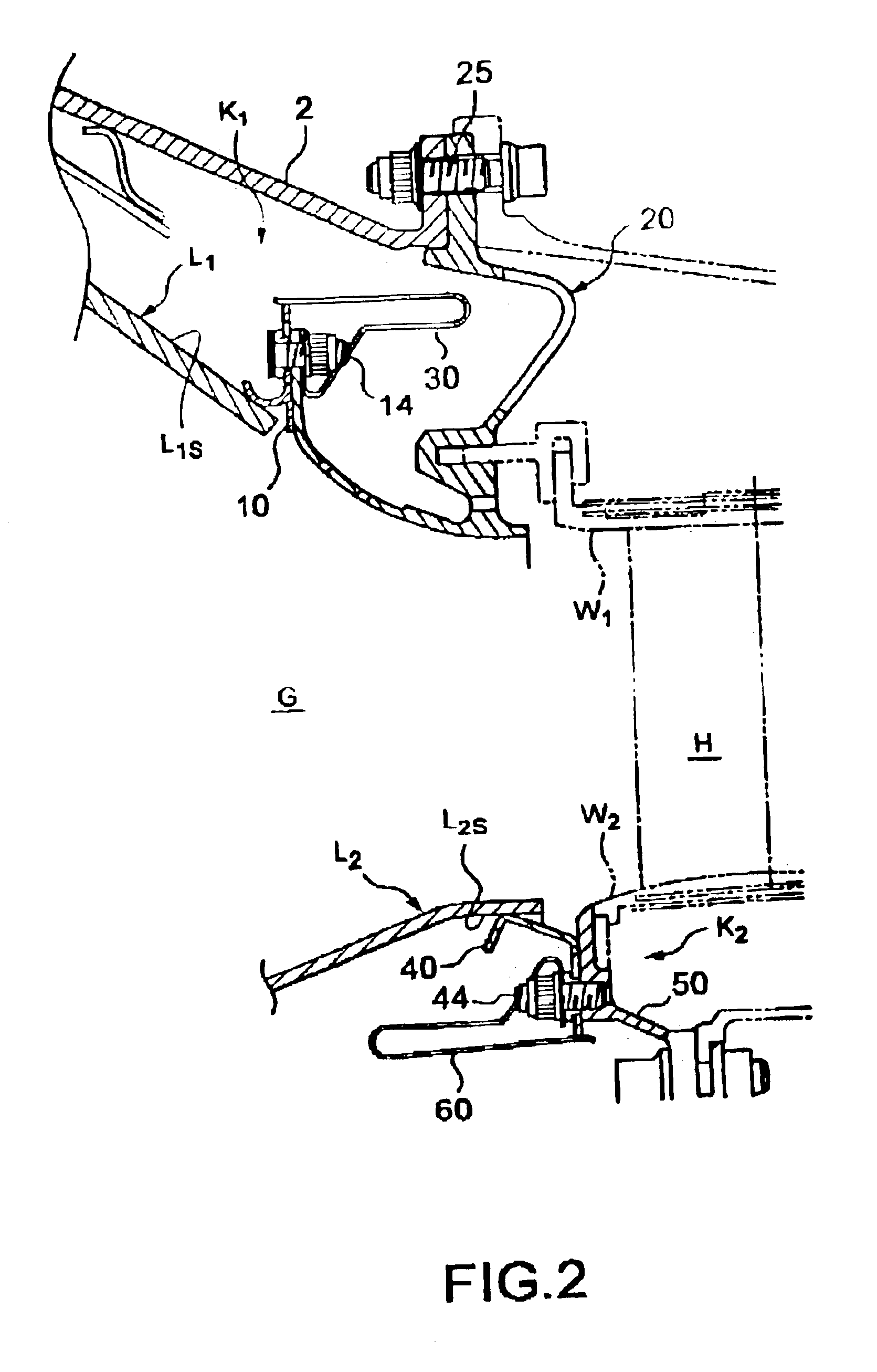Sealing structure for combustor liner
a combustor and liner technology, applied in the direction of efficient propulsion technologies, machines/engines, light and heating apparatus, etc., can solve the problems of large difference in thermal expansion coefficient between a cmc and a metal, difficulty in significantly reducing the amount of cooling air for the combustor liner, and large difference in thermal expansion coefficient between the combustor liner and the structure of the metallic material surrounding the combustor liner, etc., to achieve the effect o
- Summary
- Abstract
- Description
- Claims
- Application Information
AI Technical Summary
Benefits of technology
Problems solved by technology
Method used
Image
Examples
Embodiment Construction
FIG. 1 shows a combustor A provided with a sealing structure in a preferred embodiment according to the present invention. The combustor A is an annular combustor included in a gas turbine as, for example, an aircraft engine. The combustor A has a toroidal combustion chamber 1, and includes an outer case 2, a combustor liner L, and an inner case 3.
Main burner units 1a and pilot burner units 1b are disposed in the-combustion chamber 1. The combustor liner L consists of an annular outer liner L1 and an annular inner liner L2 of a diameter smaller than that of the outer liner L1. The liners L1 and L2 are formed of a ceramic material, such as a CMC, i.e., a fiber-reinforced composite ceramic material. The combustion chamber 1 is defined by the outer liner L1, the inner liner L2, and a dome D of a metal joined to the ends of the liners L1 and L2. An outer cooling air passage 4A is defined by the outer case 2 and the outer liner L1, and an inner cooling air passage 4B is defined by the in...
PUM
 Login to View More
Login to View More Abstract
Description
Claims
Application Information
 Login to View More
Login to View More - R&D
- Intellectual Property
- Life Sciences
- Materials
- Tech Scout
- Unparalleled Data Quality
- Higher Quality Content
- 60% Fewer Hallucinations
Browse by: Latest US Patents, China's latest patents, Technical Efficacy Thesaurus, Application Domain, Technology Topic, Popular Technical Reports.
© 2025 PatSnap. All rights reserved.Legal|Privacy policy|Modern Slavery Act Transparency Statement|Sitemap|About US| Contact US: help@patsnap.com



